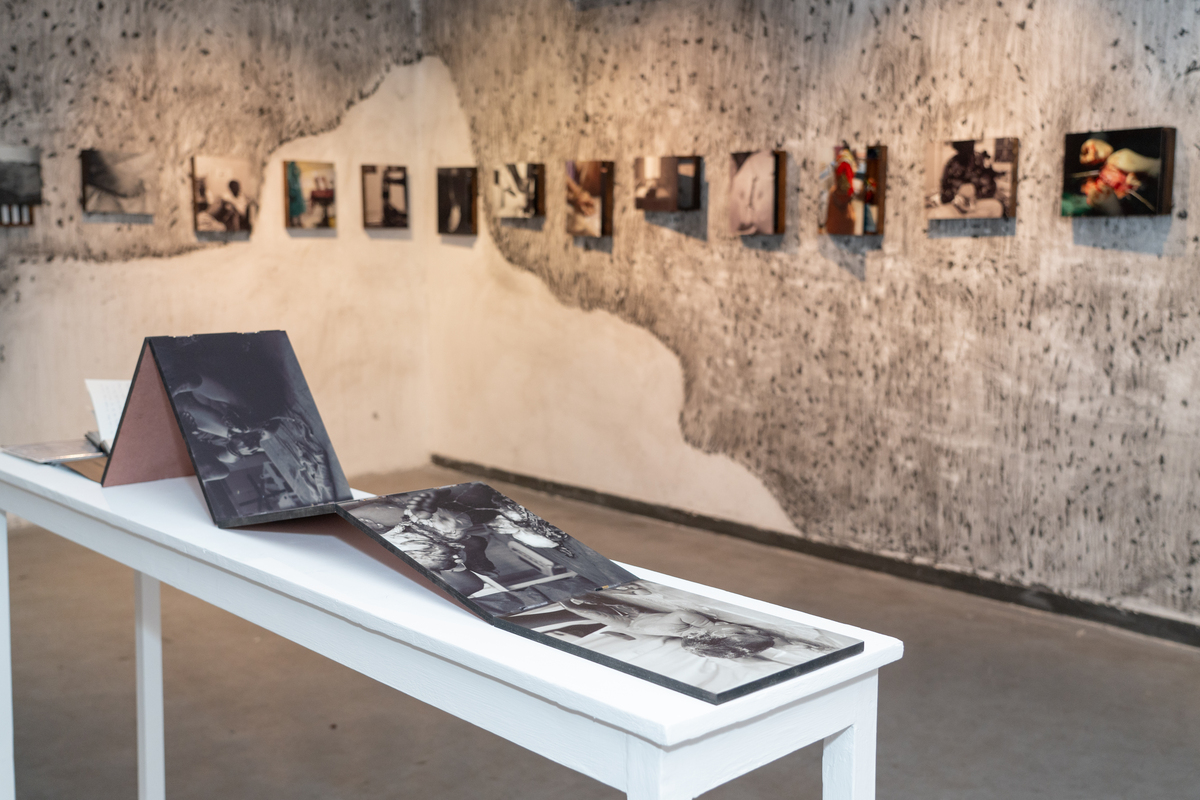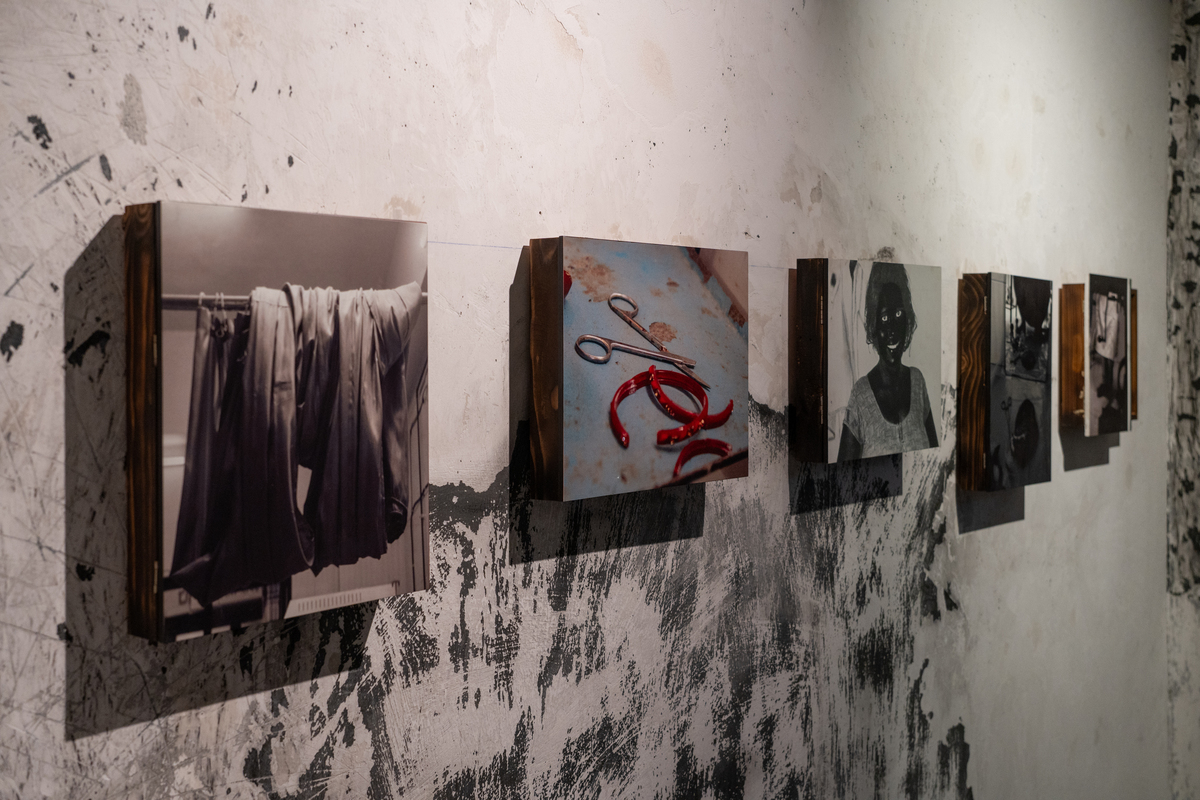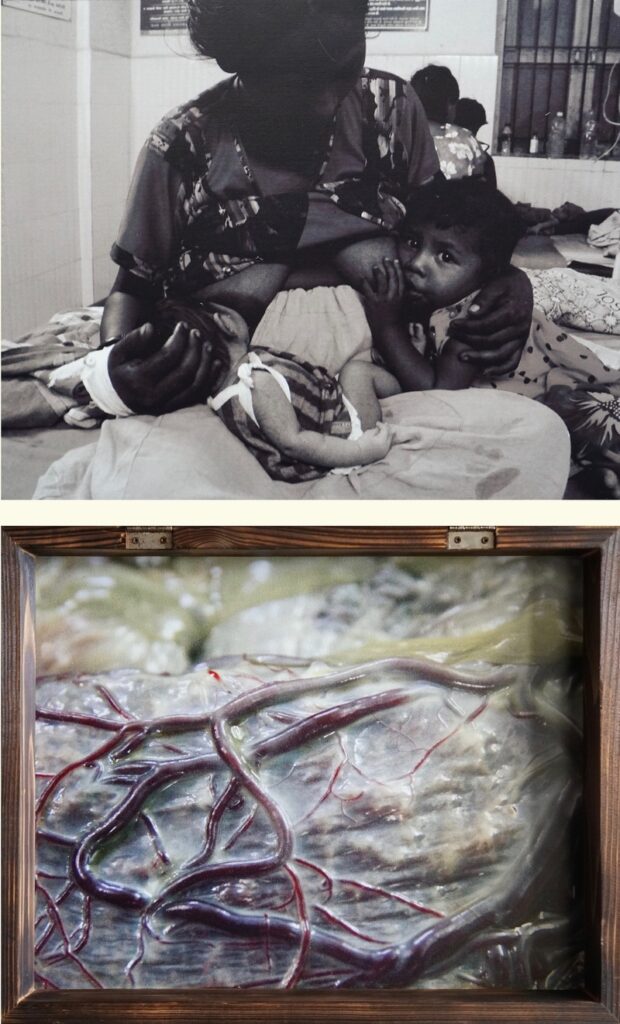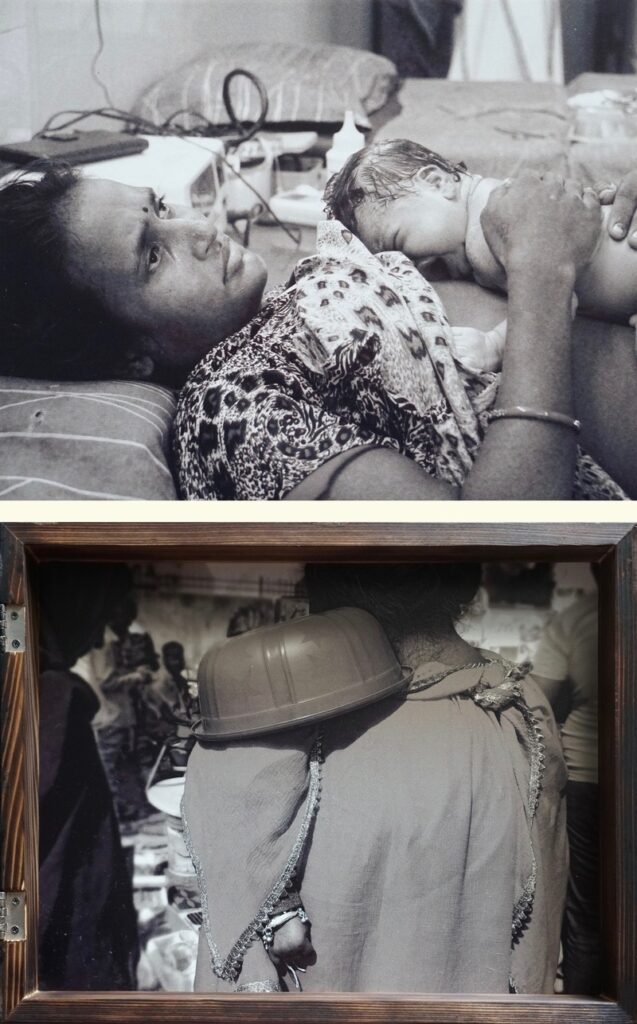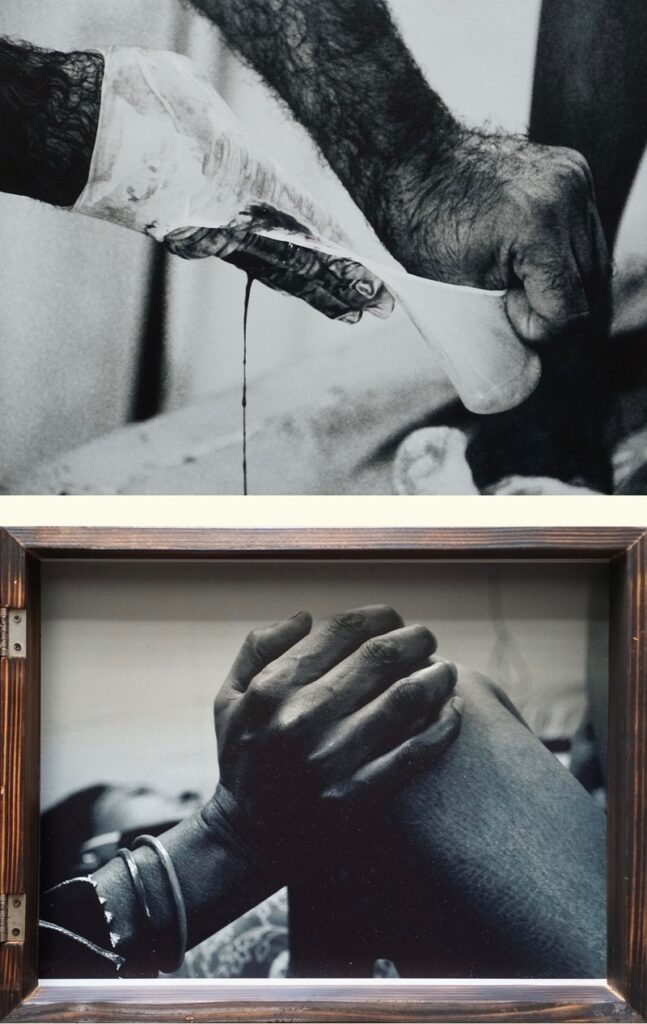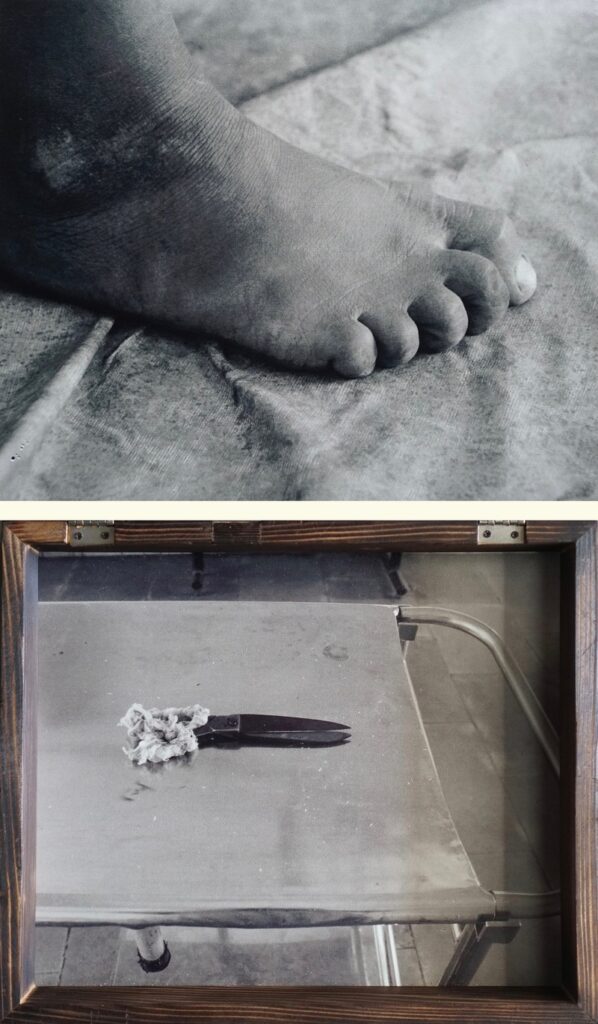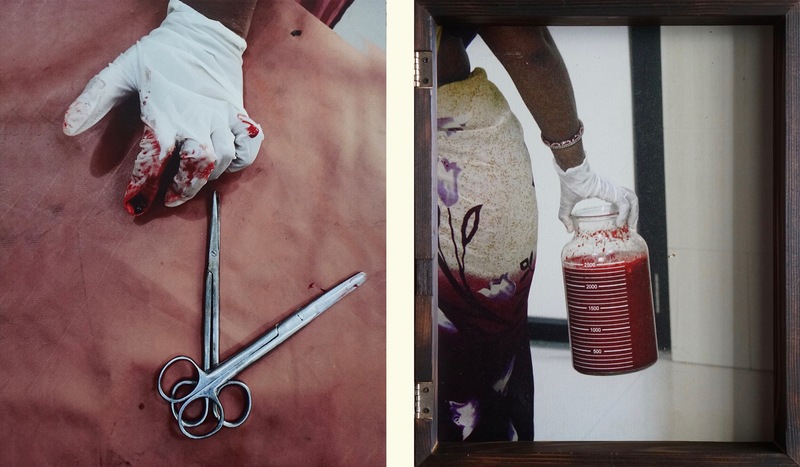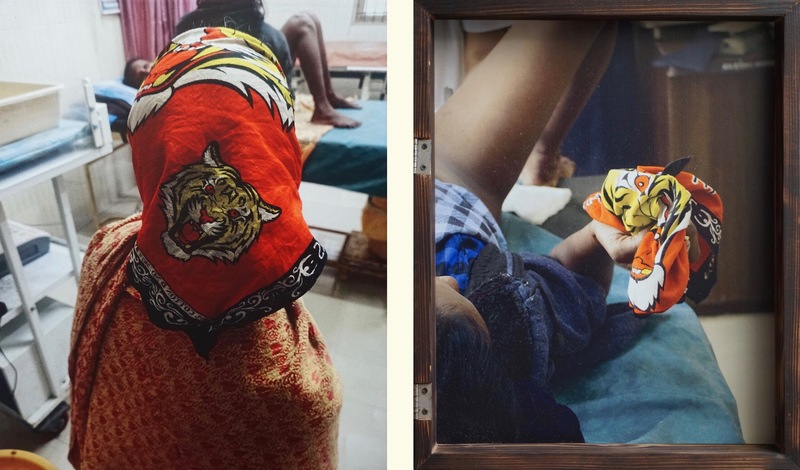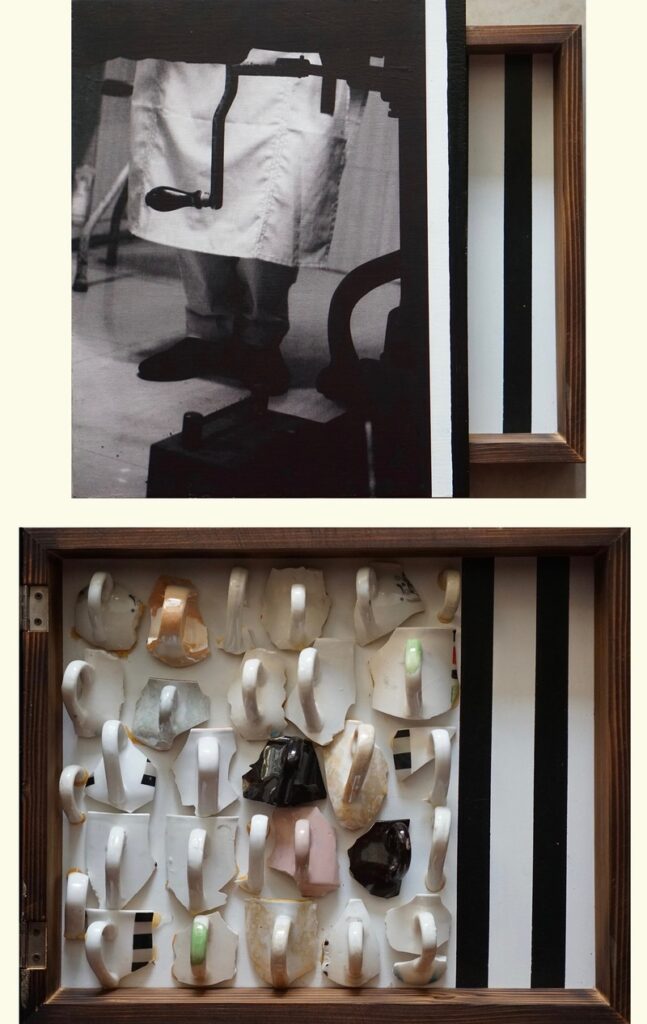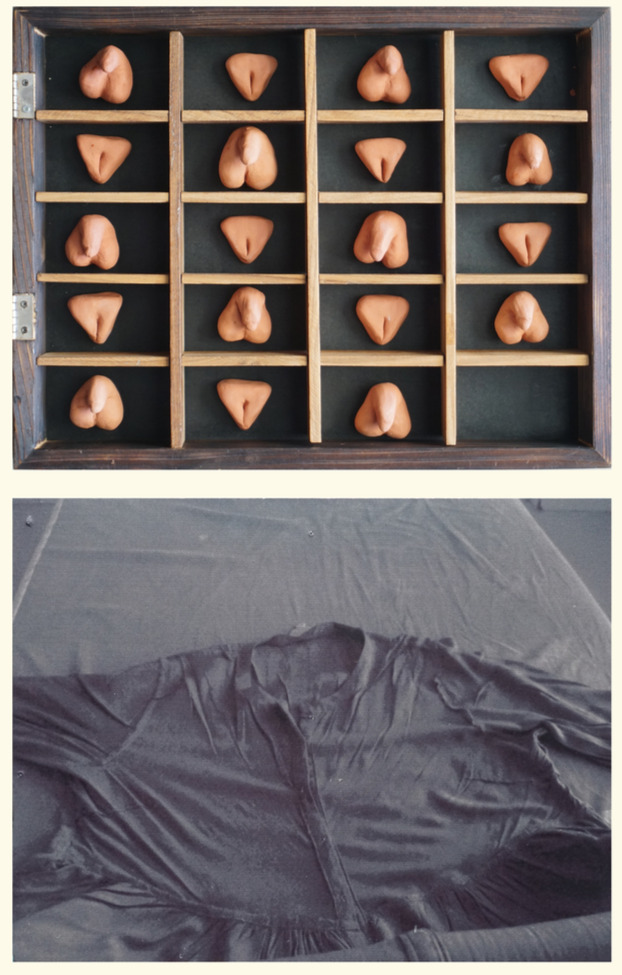Come With Your Own Light
Apr 12, 2024 - Jun 15, 2024
- SELECTED WORKS
- CURATORIAL NOTE
- INVITE
- PRESS RELEASE
- DOWNLOAD CATALOGUE

In the realm of the labour room consisting of spotlighted beds and surgery tools, lies the tale of embroidered bodies bewildered if to feel pleasure in pain or pain in pleasure. Laying on the bed, contemplating her identity, the pregnant woman wonders on her dual and frustrated state of being. To chronicle these unheard voices reverberating behind the closed doors of the unhinged mechanised labour room far away from the public imagination, Komal Mistri, a Baroda based artist spent three months in the enclosed spaces of Hospitals across Gujarat. Documenting the process of childbirth that has been ritualised and considered throughout civilisations as sacred and a celebratory phenomenon the artist captures and interprets the unspoken narratives that mark the transformation of the woman’s body and psyche, a space marked by unpredictability, vulnerability, and trust. It’s a space where the eternal process of life and death occurs every other minute. There’s a rhythm to how the dynamic of relationships gets played out in the hospital space. Like the family members, the artist here takes the role of the confidante, a listener to the woes and happinesses of the labouring mothers. Mistry’s practice includes churning out the memories from the objects that inform her subjects’ living processes. Bottles of blood, placentas, scissors, stretchers and machines serve as symbols of the mechanised nature and almost apathetic treatment of the labouring patients. To capture such images is itself an act of revelation to the artist whose personal experience with childbirth and healthcare systems marks her artistic practice.
– Text by Saloni Jaiwal
CURATORIAL NOTE
“It is our being looked at by the photograph-as-flesh that makes us fully corporeal subjects in vision; this being looked at also substantiates the subjectivity of the person in the picture, but always already in relation to us, those it “views.”” (Amelia Jones, “The “Eternal Return”: Self‐Portrait Photography as a Technology of Embodiment”, Signs, 2002, p. 970)
In the realm of the labour room consisting of spotlighted beds and surgery tools, lies the tale of embroidered bodies bewildered if to feel pleasure in pain or pain in pleasure. Lying on the bed, contemplating her identity, the pregnant woman wonders on her dual and frustrated state of being. To chronicle these unheard voices reverberating behind the closed doors of the unhinged mechanised labour room far away from the public imagination, Komal Mistri, a Baroda based artist spent three months in the enclosed spaces of Hospitals across Gujarat. Documenting the process of childbirth that has been ritualised and considered throughout civilisations as sacred and a celebratory phenomenon the artist captures and interprets the unspoken narratives that mark the transformation of the woman’s body and psyche, a space marked by unpredictability, vulnerability, and trust. It’s a space where the eternal process of life and death occurs every other minute.
There’s a rhythm to how the dynamic of relationships gets played out in the hospital space. Like family members, Mistri assumes the role of a confidante, a listener to the woes, injustices and happinesses of her women subjects. Mistry’s practice includes churning out the memories from the objects that inform her subjects’ living processes. Bottles of blood, placentas, scissors, stretchers and machines serve as symbols of the mechanised nature of the medical arena. To capture such images is itself an act of revelation to the artist whose personal experience with childbirth and healthcare systems marks her intervention with the photographs in terms of painting and found objects being juxtaposed with each other housed in cabinet-like structures. The hiding and revealing acted out through the cabinet doors work towards an interactivity and performativity that generates curiosity in the viewer to find the hidden memory that could be a photograph or an object resounding the unpredictability that plays out within the process of child-birth.
Produced during the pandemic, the current body of work is a result of an extremely challenging process of documentation, pertaining to the anxiety that existed around ‘coming into contact’, especially in the setting of hospitals and the restrictions that were imposed preventing access to these areas. Mistri’s close encounters with the women in maternity wards that also exposed the unpleasant conditions of healthcare systems are turned by the artist into an archive of personal yet collective experiences. The ‘shock’ effect of some of the very horror-inducing images, especially ones containing the body is contrasted with images of healing and care that come in the form of intimate moments of the women with their close ones accelerated by touch. The artist navigates through ethics of representation, the violence of the camera peeping into private worlds and the documentary image by a deep process of familiarization with the image choosing what to hide and what to reveal, figuration and abstraction, fact and emotion, loud whispers and silent screams.
Appearance of the naked body, stitched, stained in blood, filled with stretch-marks in fragments juxtaposed with other objects takes us to the haptic visuality of the photograph, that is enhanced here by its relationship with those objects. Invoking a multi-sensorial experience, every assemblage – the photograph and the three-dimensional physical object enclosed in the cabinet – become sources of memory generation of space and identities for the viewer whose own memories gets intermixed affecting their perspective of the photographic work. Susan Sontag observes in Regarding the Pain of Others (2003), “The photograph is like a quotation, or a maxim or proverb. Each of us mentally stocks hundreds of photographs, subject to instant recall.” Mistri’s interventionist approach creates a rupture in the public memory encoded with millions of journalistic, cinematic and family photography images of the phenomenon of childbirth through her personally mediated equations and often constructed surrealistic imagery, sometimes resulting into dark humour.
In the processing of images, a negotiation of identities and voices emerges among the artist, the subject and the viewer, that is influenced by uncertainties reflected within the walled space of the hospital rooms. The subjects in these assemblages return the gaze back through a negotiation of identities and offer new possibilities of thinking about natural processes such as childbirth that is problematized through the suffering body (of woman), gender dynamics, class and caste hierarchies that are played out within the healthcare system and apathetic nature of medical procedures. However, there are moments of solidarity built through collective experience within this larger backdrop which the resisting bodies with their unflinching perseverance reclaim through the process of care and healing. The exhibition thus urges the spectator to come with their own light to discover what we call Barthes’ punctum in these photo images which are a provocation in themselves asking, “Can you see this?”
-Text by Saloni Jaiwal
